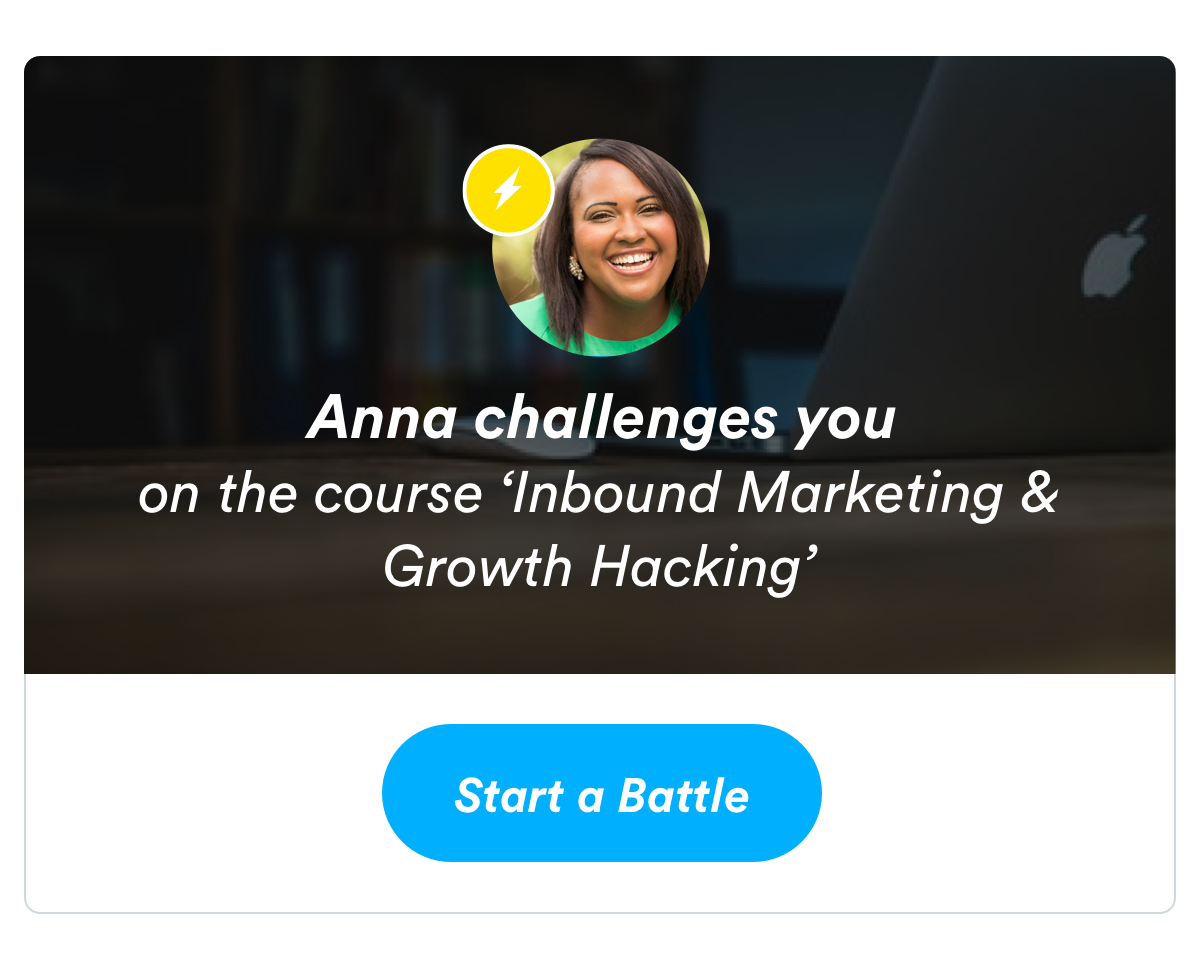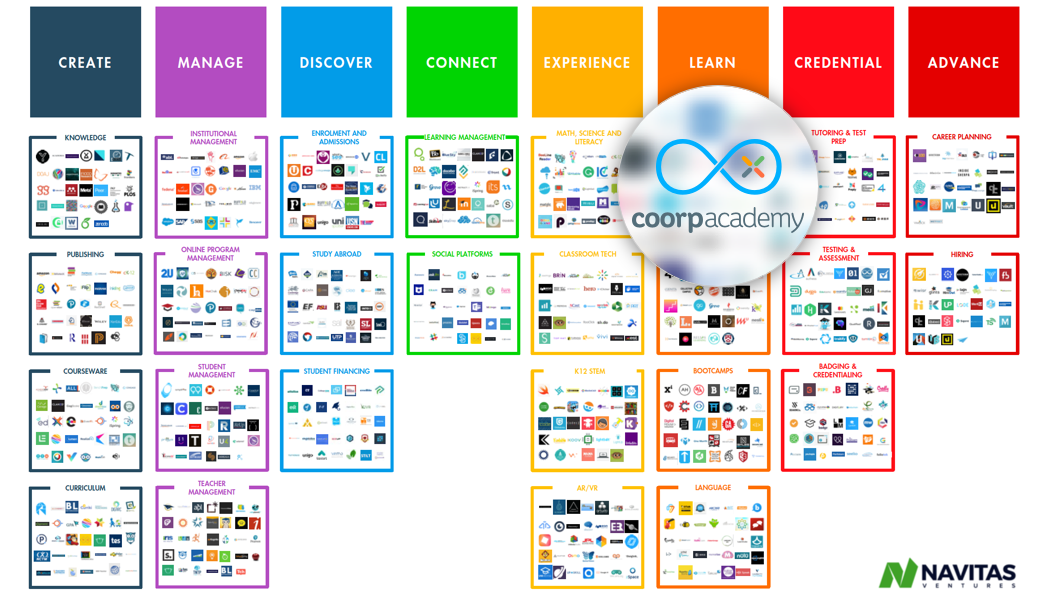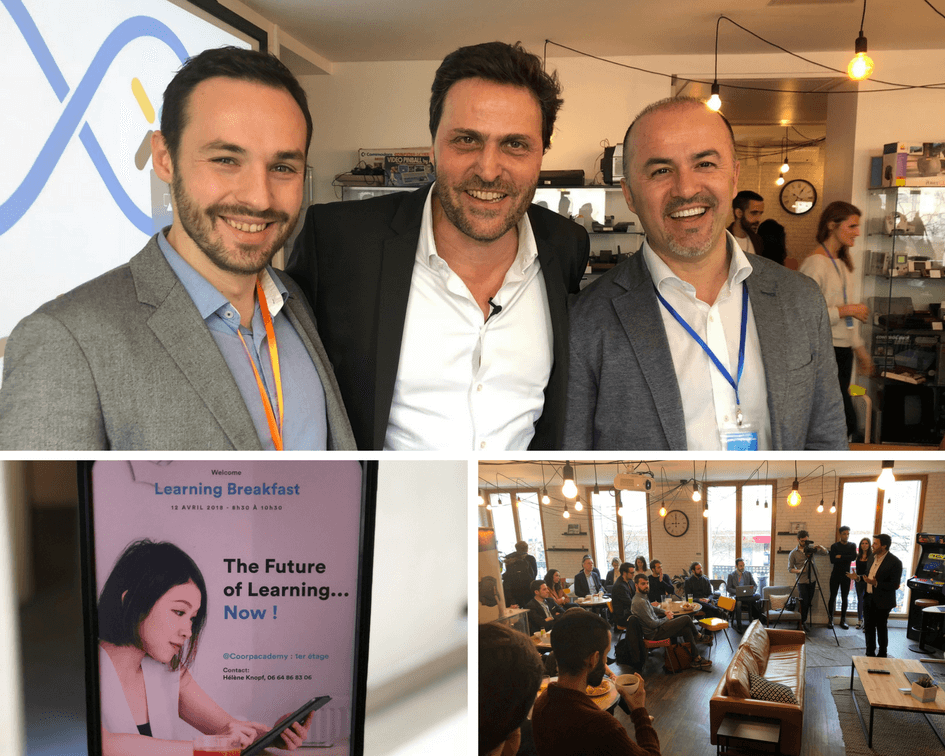Learning is difficult.
Learning new skills has always been tough, in school or in corporations. To remedy this situation, we provide on the Coorpacademy platforms features coming from the gaming world to sparks engagement and make training fun, addictive and attractive.

The Battle mode, one of our most iconic gaming feature, has a significative impact on learning, in the short-term but also in the long-term. What’s a Battle? A mode where the learner can challenge another one in a quick quiz battle.
You think you’re unbeatable on cognitive biases, those thinking traps that can easily trick your mind and ways of thinking? You want to challenge your colleague Anna on the topic? It’s easy: launch the Battle mode, click on “Create a Battle”, choose your Playlist, the course and the course level (in this case the “Always one step ahead!” Playlist and the course Cognitive Biases: Thinking Traps) and answer the questions.
Once the quiz is done, Anna will receive an email inviting her to answer the same questions. The one who has the most right answers wins the Battle, and then Stars to climb up the ranking. If it’s a draw, the one who answered the fastest wins the Battle.
You won? Anna wants her revenge and challenges you again on her favorite course, Inbound Marketing and Growth Hacking! 
Because you’re doing Battles, Anna and yourself are more engaged in your training courses. It’s been proven that Battles were improving coworkers’ engagement in corporate training.
In our Learning Report 2018, we identified a type of learners, the Players (the learners who played at least one Battle) and we realized that Players were more engaged and more efficient in training. The Players are 2x more present: the number of months that a learner is active on the platform during his/her whole learner life cycle is two times higher for Battle players than for non-players. The Players are also 3x more active, with more than 3x more lessons viewed. They also dive deeper into the content: they have started and completed 7 more modules on average than non-players. Finally, the Players are 13% more successful (success rate is measured as the completion rate of started modules) than non-Players.
Our clients are also seeing the difference. In our latest interview with BNP Paribas Asset Management (they launched their Coorpacademy-powered platform Digit’Learning in May 2018), Sylvie Vazelle-Tenaud, Head of Marketing Europe for Individuals, Advisors and Online Banks, told us:
We present the platform as a tool for gaining expertise with a gaming aspect. In our communication, we mainly highlight the functionality of “lives”. We also highlight the fact they can earn stars. This functionality enables us to generate emulation between employees and make them want to take the courses again. Conversely, we didn’t communicate very much about battles but the employees discovered that functionality on their own and loved it! Coorpacademy offers flexibility in learning without being time-consuming, as the average duration of an entire learning journey is 20 minutes. Employees build their expertise in record time while having fun!
Indeed, more than 70,000 Battles have been launched on the BNP Paribas Asset Management platform in only one year. Playing is natural, it doesn’t seem to require a lot of effort and at the same time it helps and favour learning.
Learning becomes easier.
On all our platforms, we reached 1 million Battles played!
Will you launch the 1 million and one?
Ready, steady, challenge!



